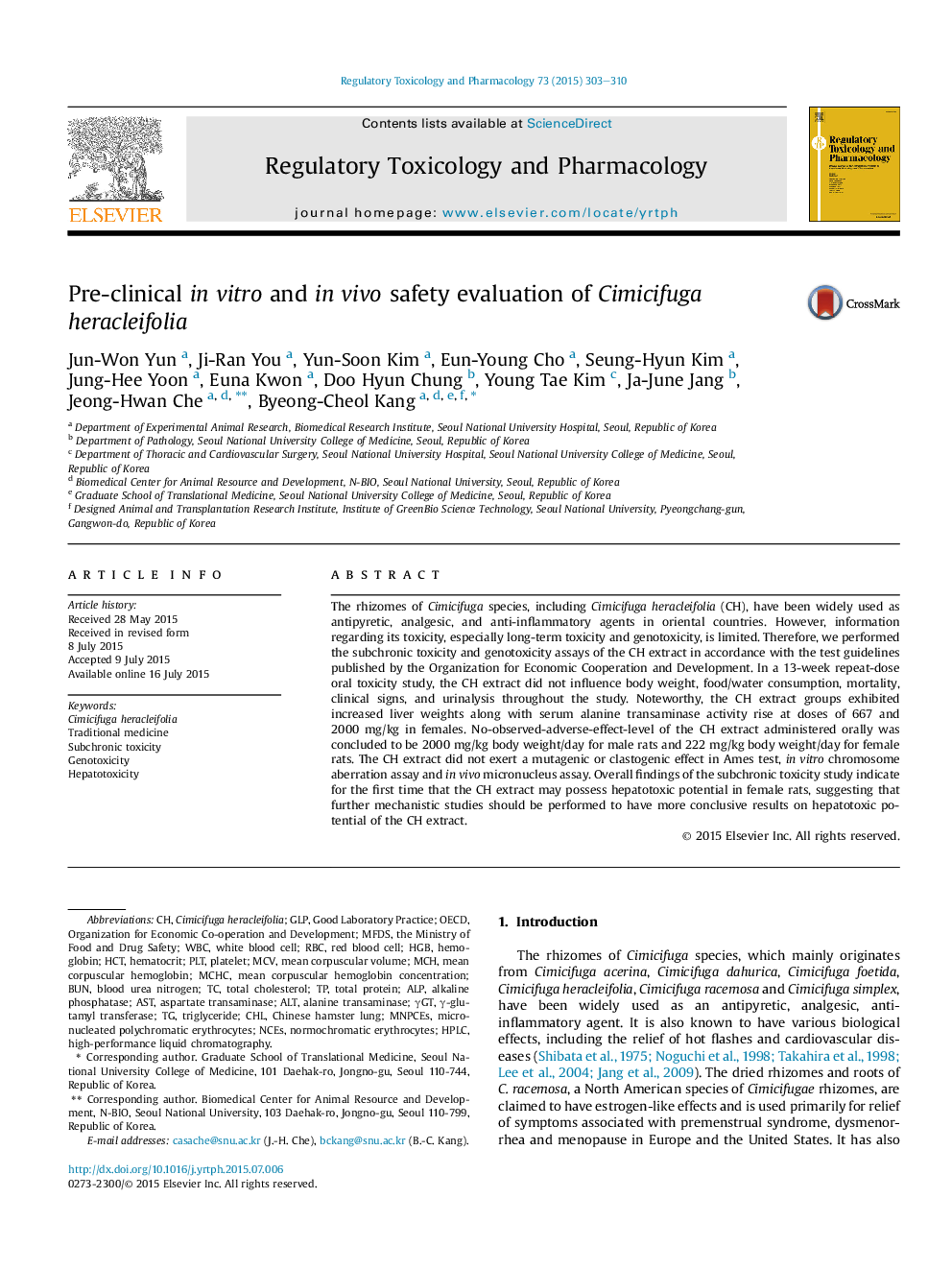| Article ID | Journal | Published Year | Pages | File Type |
|---|---|---|---|---|
| 5856332 | Regulatory Toxicology and Pharmacology | 2015 | 8 Pages |
â¢Subchronic exposure of CH extract showed serum ALT activity rise in female rats.â¢Liver weight was increased by subchronic exposure of CH extract in female rats.â¢In subchronic study, NOAEL was determined to be 2000 mg/kg/day for male rats and 222 mg/kg/day for female rats.â¢In genotoxicity studies, CH extract was not clastogenic and mutagenic.
The rhizomes of Cimicifuga species, including Cimicifuga heracleifolia (CH), have been widely used as antipyretic, analgesic, and anti-inflammatory agents in oriental countries. However, information regarding its toxicity, especially long-term toxicity and genotoxicity, is limited. Therefore, we performed the subchronic toxicity and genotoxicity assays of the CH extract in accordance with the test guidelines published by the Organization for Economic Cooperation and Development. In a 13-week repeat-dose oral toxicity study, the CH extract did not influence body weight, food/water consumption, mortality, clinical signs, and urinalysis throughout the study. Noteworthy, the CH extract groups exhibited increased liver weights along with serum alanine transaminase activity rise at doses of 667 and 2000 mg/kg in females. No-observed-adverse-effect-level of the CH extract administered orally was concluded to be 2000 mg/kg body weight/day for male rats and 222 mg/kg body weight/day for female rats. The CH extract did not exert a mutagenic or clastogenic effect in Ames test, in vitro chromosome aberration assay and in vivo micronucleus assay. Overall findings of the subchronic toxicity study indicate for the first time that the CH extract may possess hepatotoxic potential in female rats, suggesting that further mechanistic studies should be performed to have more conclusive results on hepatotoxic potential of the CH extract.
